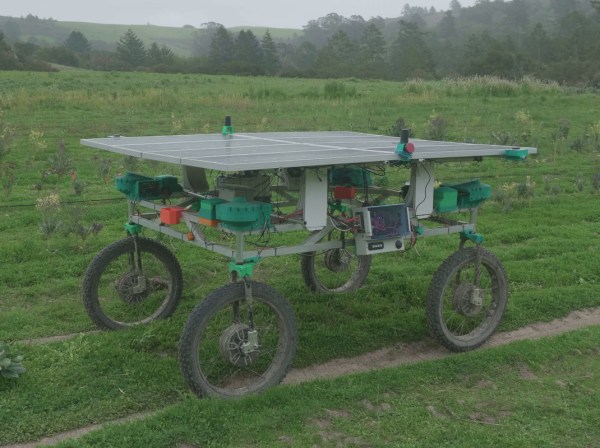January 9 ended up being a very expensive day for a Culver City, California man after he pleaded guilty to recklessly operating a drone during the height of the Pacific Palisades wildfire. We covered this story a bit when it happened (second item), which resulted in the drone striking and damaging the leading edge of a Canadian “Super Scooper” plane that was trying to fight the fire. Peter Tripp Akemann, 56, admitted to taking the opportunity to go to the top of a parking garage in Santa Monica and launching his drone to get a better view of the action to the northwest. Unfortunately, the drone got about 2,500 meters away, far beyond visual range and, as it turns out, directly in the path of the planes refilling their tanks by skimming along the waters off Malibu. The agreement between Akemann and federal prosecutors calls for a guilty plea along with full restitution to the government of Quebec, which owns the damaged plane, plus the costs of repair. Akemann needs to write a check for $65,169 plus perform 150 hours of community service related to the relief effort for the fire’s victims. Expensive, yes, but probably better than the year in federal prison such an offense could have earned him.
emergency17 Articles
Hackaday Links: October 20, 2024
When all else fails, there’s radio. Hurricane Helene’s path of destruction through Appalachia stripped away every shred of modern infrastructure in some areas, leaving millions of residents with no ability to reach out to family members or call for assistance, and depriving them of any news from the outside world. But radio seems to be carrying the day, with amateur radio operators and commercial broadcasters alike stepping up to the challenge.
Hackaday Links: September 29, 2024
There was movement in the “AM Radio in Every Vehicle Act” last week, with the bill advancing out of the US House of Representatives Energy and Commerce Committee and heading to a full floor vote. For those not playing along at home, auto manufacturers have been making moves toward deleting AM radios from cars because they’re too sensitive to all the RF interference generated by modern vehicles. The trouble with that is that the government has spent a lot of effort on making AM broadcasters the centerpiece of a robust and survivable emergency communications system that reaches 90% of the US population.
The bill would require cars and trucks manufactured or sold in the US to be equipped to receive AM broadcasts without further fees or subscriptions, and seems to enjoy bipartisan support in both the House and the Senate. Critics of the bill will likely point out that while the AM broadcast system is a fantastic resource for emergency communications, if nobody is listening to it when an event happens, what’s the point? That’s fair, but short-sighted; emergency communications isn’t just about warning people that something is going to happen, but coordinating the response after the fact. We imagine Hurricane Helene’s path of devastation from Florida to Pennsylvania this week and the subsequent emergency response might bring that fact into focus a bit.
A Simple Stove, Built For Beans
Sitting around a campfire or fireplace is an aesthetically pleasing experience in most situations, and can even provide some warmth. But unless you have a modern wood-burning appliance, it’s likely that most of the energy available in the biomass is escaping as un-burned vapors. Surprisingly, solving this problem is almost as easy as buying a can of beans at the store, and the result is a very efficient stove which can be used for heat in a pinch.
[Robert] is demonstrating this gasifier stove, not with beans but using both a can of peas and a larger can of potatoes. Various holes are drilled in each can in a specific pattern, and then the smaller pea can is fitted inside the larger potato can. Once a fire is going, the holes allow for air to flow in a way which traps the escaping un-burned vapors from the fuel and burns them as they flow through the contraption. No moving parts are required; this is all powered by the natural airflow that’s produced by the heat of the fire.
The result of a build like this is not only a stove which can extract a much higher percentage of the available fuel, but also quires much less fuel for a given amount of heat, and produces a much cleaner, less smokey fire. [Robert] also added a screen mantle which allows for this to be used more as a heat source, but similar builds can also be used just as effectively for cooking, too.
Hackaday Links: August 21, 2022
As side-channel attacks go, it’s one of the weirder ones we’ve heard of. But the tech news was filled with stories this week about how Janet Jackson’s “Rhythm Nation” is actually a form of cyberattack. It sounds a little hinky, but apparently this is an old vulnerability, as it was first noticed back in the days when laptops commonly had 5400-RPM hard drives. The vulnerability surfaced when the video for that particular ditty was played on a laptop, which would promptly crash. Nearby laptops of the same kind would also be affected, suggesting that whatever was crashing the machine wasn’t software related. As it turns out, some frequencies in the song were causing resonant vibrations in the drive. It’s not clear if anyone at the time asked the important questions, like exactly which part of the song was responsible or what the failure mode was on the drive. We’ll just take a guess and say that it was the drive heads popping and locking.
Open-Source Farming Robot Now Includes Simulations
Farming is a challenge under even the best of circumstances. Almost all conventional farmers use some combination of tillers, combines, seeders and plows to help get the difficult job done, but for those like [Taylor] who do not farm large industrial monocultures, more specialized tools are needed. While we’ve featured the Acorn open source farming robot before, it’s back now with new and improved features and a simulation mode to help rapidly improve the platform’s software.
The first of the two new physical features includes a fail-safe braking system. Since the robot uses electric geared hub motors for propulsion, the braking system consists of two normally closed relays which short the motor leads in emergency situations. This makes the motors see an extremely high load and stops them from turning. The robot also has been given advanced navigation facilities so that it can follow custom complex routes. And finally, [Taylor] created a simulation mode so that the robot’s entire software stack can be run in Docker and tested inside a simulation without using the actual robot.
For farmers who are looking to buck unsustainable modern agricultural practices while maintaining profitable farms, a platform like Acorn could be invaluable. With the ability to survey, seed, harvest, and even weed, it could perform every task of larger agricultural machinery. Of course, if you want to learn more about it, you can check out our earlier feature on this futuristic farming machine.
Hackaday Links: August 1, 2021
Amateur radio operators have a saying: When all else fails, there’s ham radio. And that’s true, at least to an extent — knock out the power, tear down the phone lines, and burn up all the satellites in orbit, and there will still be hams talking about politics on 40 meters. The point is, as long as the laws of physics don’t change, hams will figure out a way to send and receive messages. In honor of that fact, the police in the city of Pune in Maharashtra, India, make it a point to exchange messages with their headquarter using Morse code once a week. The idea is to maintain a backup system, in case they can’t get a message through any other way. It’s a good idea, especially since they rotate all their radio operators through the Sunday morning ritual. We can’t imagine that most emergency services dispatchers would be thrilled about learning Morse, though.
Just because you’re a billionaire with a space company doesn’t mean you’re an astronaut. At least that’s the view of the US Federal Aviation Administration, which issued guidelines pretty much while Jeff Bezos and his merry band of cohorts were floating about above the 100-km high Kármán line in a Blue Origin “New Shepard” rocket. The FAA guidelines make it clear that those making the trip need to have actually done something to qualify as an astronaut, by “demonstrated activities during flight that were essential to public safety, or contributed to human space flight safety.” That’s good news to the “Old Shepard”, who clearly was in control of “Freedom 7” during the Mercury program. But the Bezos brothers, teenager Oliver Daemen, and Wally Funk, one of the “Mercury 13” group of women who trained to be NASA astronauts but never got to fly, were really just along for the ride, as the entire flight was automated. It doesn’t take away from the fact that they’ve been to space and you haven’t, of course, but they can’t officially call themselves astronauts. This goes to show that even billionaires can just be ballast too.
Good news, everyone — if you had anything that was being transported aboard the Ever Given, your stuff is almost there. The Suez Canal-occluding container ship finally made it to its original destination in Rotterdam, approximately four months later than originally predicted. After plugging up the vital waterway for six days last March, the ship along with her cargo and her crew were detained in Egypt’s Great Bitter Lake, perhaps the coolest sounding body of water in the world next to the Dead Sea. Legal squabbling ensued at that point, all the while rendering whatever was in the 20,000-odd containers aboard the ship pretty much pointless. We’d imagine that even with continuous power, whatever was in the refrigerated containers must be pretty nasty by now, so there’s probably a lot of logistics and clean-up left to sort out.
I have to admit that I have a weird love of explosive bolts. I don’t know what it is, but the idea of fasteners engineered to fail in a predictable way under the influence of pyrotechnic charges just tickles something in me. I mean, I even wrote a whole article on the subject once. So when I came across this video explaining how the Space Shuttles were held to the launch pad, I really had to watch it. Surprisingly, the most interesting part of this story was not the explosive aspect, but the engineering problem of supporting the massive vehicle on the launch pad. For as graceful as the Shuttles seemed once they got into orbit, they really were ungainly beasts, especially strapped to the external fuel tank and booster. The scale of the eight frangible nuts used to secure the boosters to the pad is just jaw-dropping. We also liked the idea that NASA decided to catch the debris from the explosions in a container filled with sand.












